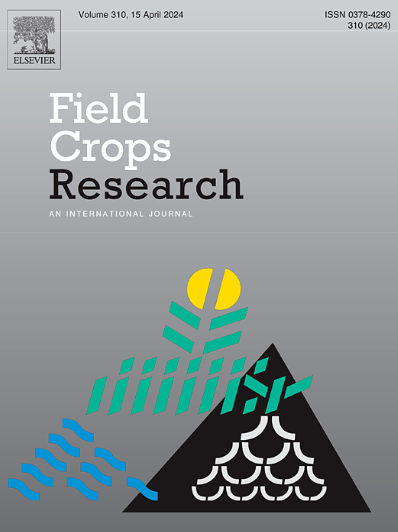东北地区土壤管理策略对玉米和大豆产量影响的meta分析
IF 6.4
1区 农林科学
Q1 AGRONOMY
引用次数: 0
摘要
土壤管理战略对于优化作物产量和维持土壤健康至关重要。然而,区域异质性影响了其有效性。为了解决这一问题,制定针对特定区域的土壤管理战略对于确保未来的粮食安全至关重要。为了解决这一问题,研究人员进行了区域机器学习辅助荟萃分析,以评估土壤管理实践、气候条件和土壤特征对作物产量的影响,并预测东北地区各种土壤管理策略的特定区域适用性。对105个田间试验的1104个观测数据进行荟萃分析表明,土壤管理措施可使产量提高36.9% %。有机肥配施产量增幅最大,为42.2% %,其次是有机肥和化肥,分别为41.1% %和28.7% %。免耕仅增产2.2 %,轮作和深耕分别增产17.1 %和18.8 %。轮作是最有效的耕作方式,而深耕在某些局部地区提供了更高的产量效益。此外,单作和轮作都显著提高了产量。随机森林分析表明,农业经营是影响产量变化的主要因素,贡献38.47 %,其次是土壤性质(33.87 %)和气候因素(27.26 %)。结构方程模型表明,产量增加主要是由土壤有机碳增加驱动的。温度、降水和粘土含量也影响区域响应。本研究强调了使土壤管理实践适应NEC环境条件以实现可持续产量提高的重要性。拟议的特定区域战略也可为面临类似限制的其他地区的农业规划提供参考,从而促进更广泛的农业可持续性。本文章由计算机程序翻译,如有差异,请以英文原文为准。
Effects of soil management strategies on maize and soybean yields in northeast China: A meta-analysis
Soil management strategies are crucial for optimizing crop yields and sustaining soil health. However, regional heterogeneity influences their effectiveness. To address this issue, developing region-specific soil management strategies is essential to ensuring future food security. As a solution, a regional machine learning aided meta-analysis was performed to assess the influence of soil management practices, climatic conditions, and soil characteristics on crop yield, and to predict the region-specific applicability of various soil management strategies across Northeast China (NEC). A meta-analysis of 1104 observations from 105 field trials showed that soil management practices increased yield by 36.9 %. Combined chemical and organic fertilization led to the highest yield increase, at 42.2 %, followed by organic fertilization at 41.1 % and chemical fertilization at 28.7 %. No tillage increased yield by only 2.2 %, while rotation tillage and subsoiling raised yields by 17.1 % and 18.8 %, respectively. Rotation tillage emerged as the most effective practice, while subsoiling provided even higher yield benefits in certain localized areas. Additionally, both crop monocropping and crop rotation significantly improved yield. Random forest analysis showed that agricultural management was the main driver of yield variation, contributing 38.47 %, followed by soil properties at 33.87 % and climate factors at 27.26 %. Structural equation modeling indicated that yield gains were mainly driven by increased soil organic carbon. Temperature, precipitation, and clay content also affected regional responses. This study underscores the importance of adapting soil management practices to the environmental conditions of NEC to achieve sustainable yield improvements. The proposed region-specific strategies may also inform agricultural planning in other areas facing similar constraints, thereby contributing to broader agricultural sustainability.
求助全文
通过发布文献求助,成功后即可免费获取论文全文。
去求助
来源期刊

Field Crops Research
农林科学-农艺学
CiteScore
9.60
自引率
12.10%
发文量
307
审稿时长
46 days
期刊介绍:
Field Crops Research is an international journal publishing scientific articles on:
√ experimental and modelling research at field, farm and landscape levels
on temperate and tropical crops and cropping systems,
with a focus on crop ecology and physiology, agronomy, and plant genetics and breeding.
 求助内容:
求助内容: 应助结果提醒方式:
应助结果提醒方式:


